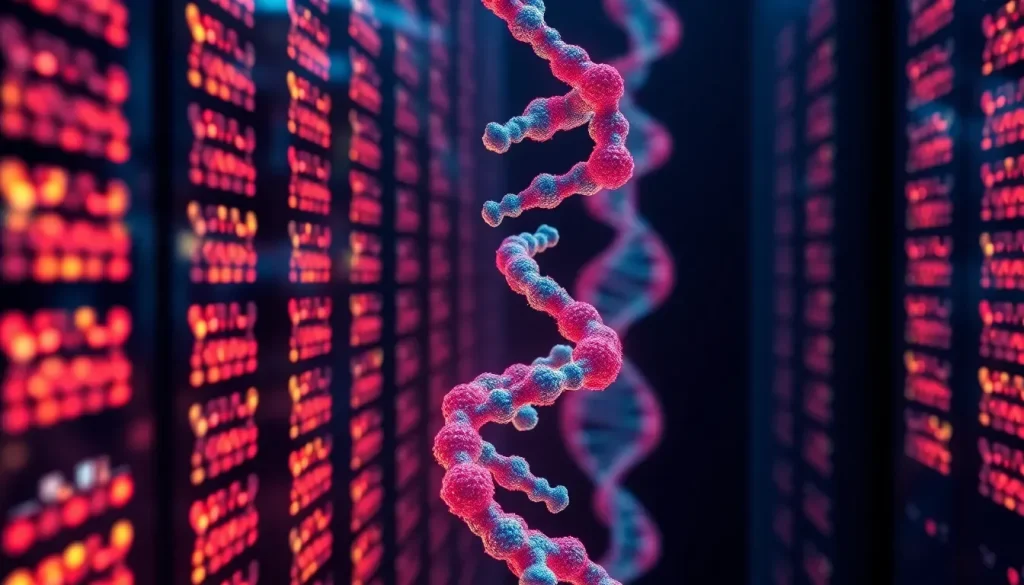Groundbreaking DNA archive could transform cancer treatment forever

In a groundbreaking development, a team of scientists from the Spanish National Cancer Research Centre (CNIO) has unveiled a remarkable innovation in our understanding of genetic health. This new resource, known as the reparoma, provides an unprecedented collection of data that focuses on the scars left in our DNA when genes become inactive or when the DNA sustains damage. This information not only enhances our understanding of genetic disorders but also opens new avenues for personalized cancer treatments and advancements in genetic editing techniques.
This article will explore the concept of the reparoma, its relationship with the human genome, and its potential implications for cancer treatment and genetic research.
The significance of deciphering DNA scars
Our DNA is constantly exposed to a variety of damaging factors. These can include:
- Ultraviolet radiation
- Chemical exposure from tobacco and alcohol
- Environmental pollution
- X-ray radiation
Fortunately, our cells are equipped with robust repair mechanisms that mitigate these damages. In most instances, these processes prevent severe consequences; however, they leave behind scars—similar to how a broken vase is mended or how surgical wounds heal.
The nature of these scars is influenced by numerous factors, primarily two critical elements: the source of the DNA damage and the repair method employed. As highlighted by the researchers at CNIO, just as we can differentiate whether a scar resulted from a puncture or a burn, we should also ascertain the origin of a scar in our DNA. Moreover, understanding whether a wound healed naturally or required stitches could help us identify the specific DNA repair mechanisms in play. This is where the reparoma becomes invaluable.
Connecting the reparoma to the human genome
DNA damage frequently disrupts the normal functioning of genes, leading to the formation of scars that reflect these interruptions. To delve deeper into this relationship, the CNIO researchers conducted an experiment involving a multitude of cells—equal in number to the genes present in the human genome.
In their experiment, they successfully inactivated individual genes in each cell while inducing breaks in the DNA using CRISPR technology. This innovative technique operates similarly to scissors, allowing precise cuts in DNA strands. While the manipulation of genes is typically the focus of CRISPR, the aim here was solely to create breaks, mimicking the damage that can occur from various environmental agents.
By analyzing the DNA scars resulting from these targeted cuts, the researchers were able to catalog the mutational footprints—referred to colloquially as scars—across the human genome. This comprehensive overview of potential DNA damage patterns is an essential advancement in genetic research.
Understanding the reparoma: its utility and implications
The simultaneous study of these cells yielded a wealth of data, meticulously analyzed through advanced computational tools at the CNIO. This extensive database allows scientists to identify and understand the intricate patterns of DNA breaks, which is critical for several reasons:
- Identifying specific patterns of DNA breaks in cancer patients can illuminate their origins, paving the way for personalized treatment approaches.
- While DNA repair mechanisms typically prevent cancer, accumulated damages can provide clues about the conditions that lead to tumor development.
- Current cancer treatments often target DNA breaks in tumor cells, but understanding how these cells repair themselves can help overcome treatment resistance.
- Insights from the reparoma could significantly enhance existing CRISPR-based editing techniques, reducing unexpected side effects during gene editing.
With this knowledge, researchers can refine their methods and potentially make gene editing safer and more effective.
Practical applications of the reparoma in ongoing research
While the announcement of the reparoma is a recent development, the CNIO team has been actively exploring its effects for some time. Their initial findings have already led to significant breakthroughs, such as:
- Identifying a distinct mutation pattern associated with kidney cancer.
- Recognizing a pattern correlated with low-oxygen conditions (hypoxia) in various tumors.
These discoveries could lay the groundwork for innovative cancer therapies in the future. The completion of the human genome was a monumental milestone, but the reparoma may prove to be equally transformative in the landscape of cancer research and treatment.
The future of cancer treatment: How the reparoma may change the landscape
The implications of the reparoma extend far beyond its current applications. As researchers continue to unravel the complexities of DNA repair and mutation patterns, several potential advancements in cancer treatment and genetic research could emerge:
- Enhanced diagnostic tools: By utilizing reparoma data, healthcare professionals could develop more accurate diagnostic tests that identify specific mutations linked to various cancers.
- Personalized medicine: The reparoma could facilitate the creation of tailored therapies that target individual cancer profiles, improving treatment effectiveness.
- Preventative strategies: Understanding how DNA damage accumulates could lead to preventative measures that reduce cancer risks.
As this field of study continues to evolve, the potential for revolutionary changes in how we approach genetic disorders and cancer treatment is immense.
For those interested in visualizing the potential of genetic research, you may find this video particularly enlightening:
In summary, the reparoma represents a significant leap forward in our understanding of genetic health and cancer treatment. By providing insights into the scars left by DNA damage, researchers at the CNIO have opened avenues for personalized medicine and enhanced treatment methodologies, marking a potential turning point in cancer research.




Leave a Reply